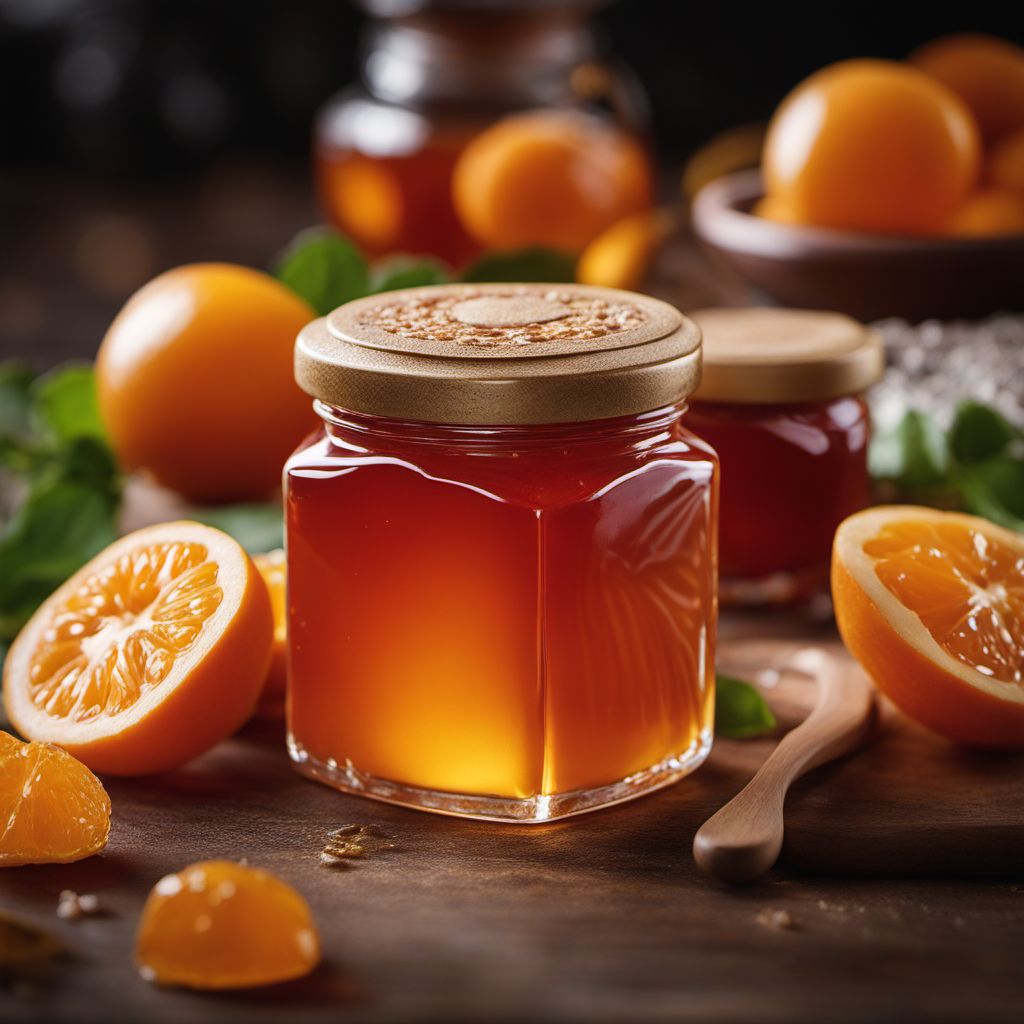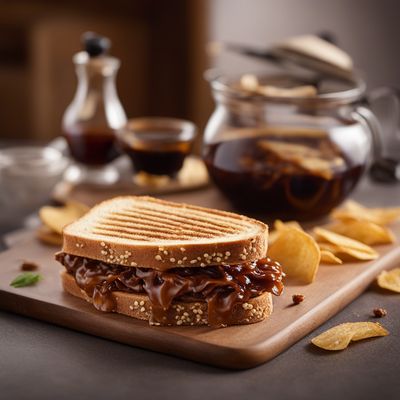
Ingredient
Marmalade
The Zesty Preserve: Marmalade
Marmalade is a type of preserve made from citrus fruits, such as oranges, lemons, or grapefruits. It is characterized by its thick, gel-like consistency, vibrant color, and a balance of tangy and bittersweet flavors. The fruit peel is often included, adding a delightful bitterness to the overall taste. Marmalade can range in texture from chunky with visible fruit pieces to smooth and spreadable.
Origins and history
The origins of marmalade can be traced back to ancient Greece, where quince fruit was used to make a similar preserve. The name marmalade" is believed to have originated from the Portuguese word "marmelada
Nutritional information
Tangy, bittersweet, and vibrant.
Allergens
Marmalade is a source of vitamin C and dietary fiber, providing a burst of citrusy goodness. However, it is important to note that marmalade is typically high in sugar content, so moderation is key when incorporating it into a balanced diet.
How to select
May contain allergens associated with citrus fruits, such as oranges, lemons, or grapefruits. Individuals with citrus allergies should avoid consuming marmalade or opt for alternative fruit preserves.
Storage recommendations
Marmalade cannot be produced by amateurs as it requires specific techniques and equipment for preserving fruits. However, citrus fruits can be grown in suitable climates, allowing individuals to produce their own fruits for potential marmalade-making endeavors.
How to produce
When selecting marmalade, look for brands that use high-quality citrus fruits and minimal additives. Opt for options with a higher fruit content and lower sugar content for a more authentic and less sweet taste. Consider trying different varieties, such as orange marmalade, lemon marmalade, or grapefruit marmalade, to explore different flavor profiles.
Preparation tips
To maintain the freshness and quality of marmalade, store it in a cool, dry place away from direct sunlight. Once opened, refrigerate the jar to prolong its shelf life. It is important to use clean utensils when scooping out the marmalade to prevent contamination.
Substitutions
Marmalade can be used in a variety of ways, including spreading it on toast, scones, or biscuits. It can also be incorporated into cakes, tarts, glazes, or used as a condiment for savory dishes like roasted meats or cheese pairings. Its tangy and bittersweet flavor adds a delightful twist to both sweet and savory recipes.
Availability
Marmalade is commonly used in British cuisine, particularly as a breakfast accompaniment or in traditional desserts like marmalade puddings or cakes. It is also popular in other countries, such as Scotland, where it is a key ingredient in the iconic Dundee cake. Marmalade is widely available in grocery stores and supermarkets worldwide.
More ingredients from this category
Recipes using Marmalade

British Twist on Seven Moles of Oaxaca
Savory British Mole Medley: A Fusion of Flavors

Marmalade Pudding with a Citrus Twist
Zesty Delight: Marmalade Pudding Infused with Citrus Flavors

Marmite and Chip Sandwich
Savory Delight: The Ultimate Marmite Chip Sandwich

Marmite and Chip Sandwich with a Viennese Twist
Savory Delight: Viennese Marmite and Chip Sandwich

Marmite Jollof Rice
Savory Marmite Jollof Rice: A Fusion of British and Nigerien Flavors